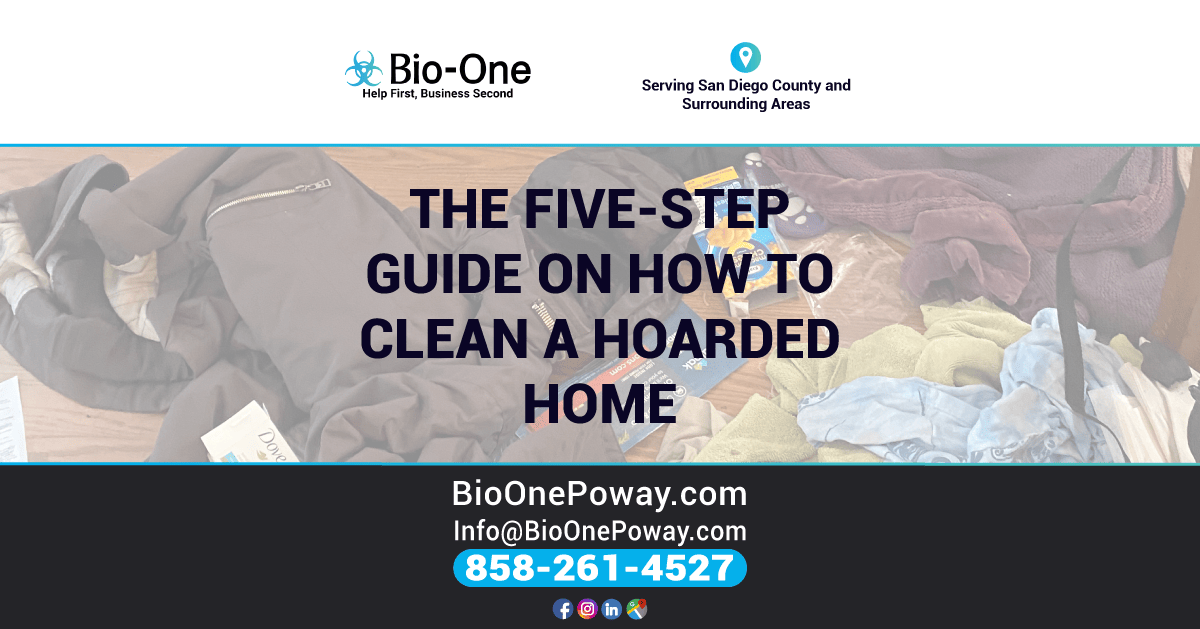
Many people believe hoarders are lazy and messy people who enjoy living in filth. However, this couldn't be further from the truth. Hoarding is a mental disorder that causes people to excessively collect items and struggle to part with them, even if they're useless. As a result, their homes often become cluttered and crammed full of belongings. If you’re wondering how to clean a hoarded home, fear not – We've put together a five-step guide on tackling any hoarding problem properly.
With patience and perseverance, you can help your loved one get their life back on track. Let's take a look at the steps involved:
One of the most daunting challenges faced by those dealing with hoarding disorder is understanding it. While there are tangible steps to be taken when managing a person's clutter, such as designating an area where they can place items, understanding this behavior at its roots requires knowledge of psychology.
Hoarding typically develops from unresolved internal struggles or traumas that have been unaddressed. While hoarders may recognize their behavior is problematic, the intensely uncomfortable emotions responsible for the behavior remain hidden and never addressed. To gain more insight into why someone has developed a hoarding disorder, gathering information in mental health education and research is essential in helping them get back on track.
An excellent way to do this is by creating an organized list of tasks, pointing out the steps you plan on taking, the order in which you should tackle them, and any supplies you may need for cleaning. Once your plan is created, stick with it! Even if it feels overwhelming, stay focused on completing each task one at a time.
If you're wondering how to clean a hoarded home, starting small and working your way up is key. Don’t try to do everything in one day. This can be very overwhelming and result in burnout or frustration. Instead, focus on tackling one room at a time and set reasonable goals for yourself each day.
Designate a closet or a bin in each room to serve as the storage space for that person. Label each designated space with its owner's name, and explain which items belong. Encourage everyone to put away their belongings at the end of every day and make sure they know where their designated spot is.
When people start to develop habits of returning their items to their designated spot, it will help ensure that the home stays organized and clutter-free. Designated spaces also make it easier for everyone in the house to find what they need since each person knows exactly where their items are.
Hoarding Disorder is a mental illness that can interfere with maintaining a clean and healthy living environment. If you or someone you know struggles with Hoarding Disorder, it is highly recommended to seek professional help from counseling and/or psychiatric services to address the underlying issues behind hoarding.
Working with a mental health specialist can provide individuals with helpful strategies such as Cognitive Behavioral Therapy (CBT) and Motivational Interviewing (MI), among others This can help individuals change their behaviors and feelings associated with hoarding, enabling them to clean and maintain a well-organized living environment successfully. It is important to recognize that overcoming an issue as complex as Hoarding Disorder requires professional guidance and support.
Professional hoarding cleanups involve a team of people who are knowledgeable and experienced in cleaning up hoarded homes. They can provide an estimate of the cost and a detailed action plan for the project. Remember that safety is always a priority when cleaning up a hoarded home.
When dealing with personal items, it’s essential to be respectful and nonjudgmental. If possible, offer help sorting through the items so they can be donated or thrown away appropriately. If not, hire a qualified professional to deal with personal items.
To learn how to clean a hoarded home, it’s important to have a plan in place for long-term success. This may involve getting the hoarder into therapy, learning new organizational techniques, and having regular maintenance schedules for home areas prone to hoarding.

Bio-One is always ready to react to unanticipated events like death, significant accidents, and hazardous situations. In the following areas of San Diego County, we provide cleaning and restoration services:
Bio-One is the best choice for helping and supporting victims and their families if a suicide, homicide, unattended death, crime scene, or trauma takes place. In addition to emergency services, Bio-One, a locally-owned company, also offers biohazard cleanup services for commercial and residential properties.
We understand that biohazardous material can be a great source of stress for property owners, so we work quickly and efficiently to minimize the disruption it causes.
We collaborate with local law enforcement, neighborhoods, emergency services personnel, victim support organizations, hoarding task forces, apartment complexes, insurance company carriers, and others to provide the best service possible.
We proudly serve the following San Diego County, CA cities and surrounding communities: Cardiff, Del Mar, Descanso, El Cajon, Encinitas, Mount Laguna, Poway, Ramona, Rancho Santa Fe, San Diego, Santee, and Solana Beach, among others.
Bio-One of Poway is a proud member of the Poway Chamber of Commerce. Our technicians are available 24/7, 365 days a year. We have the expertise to tackle any biohazard restoration and hoarding cleanup situation promptly. Give us a call at 858-261-4527 for a free estimate!